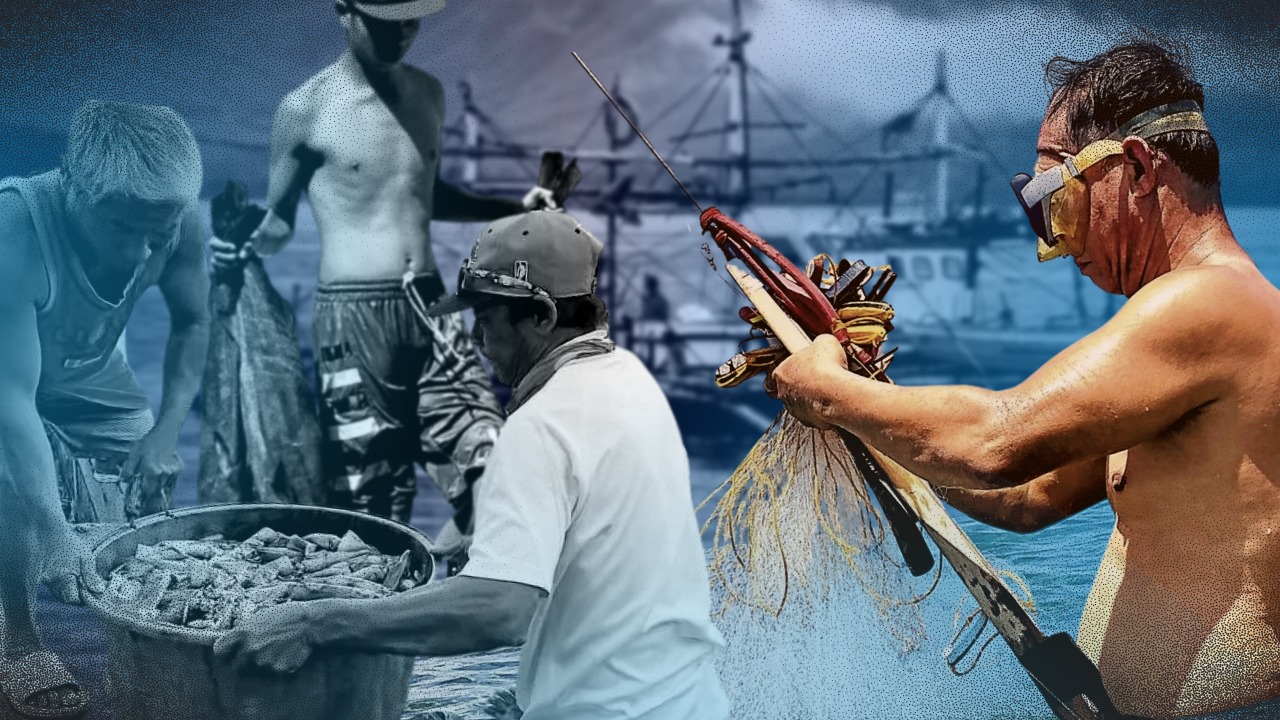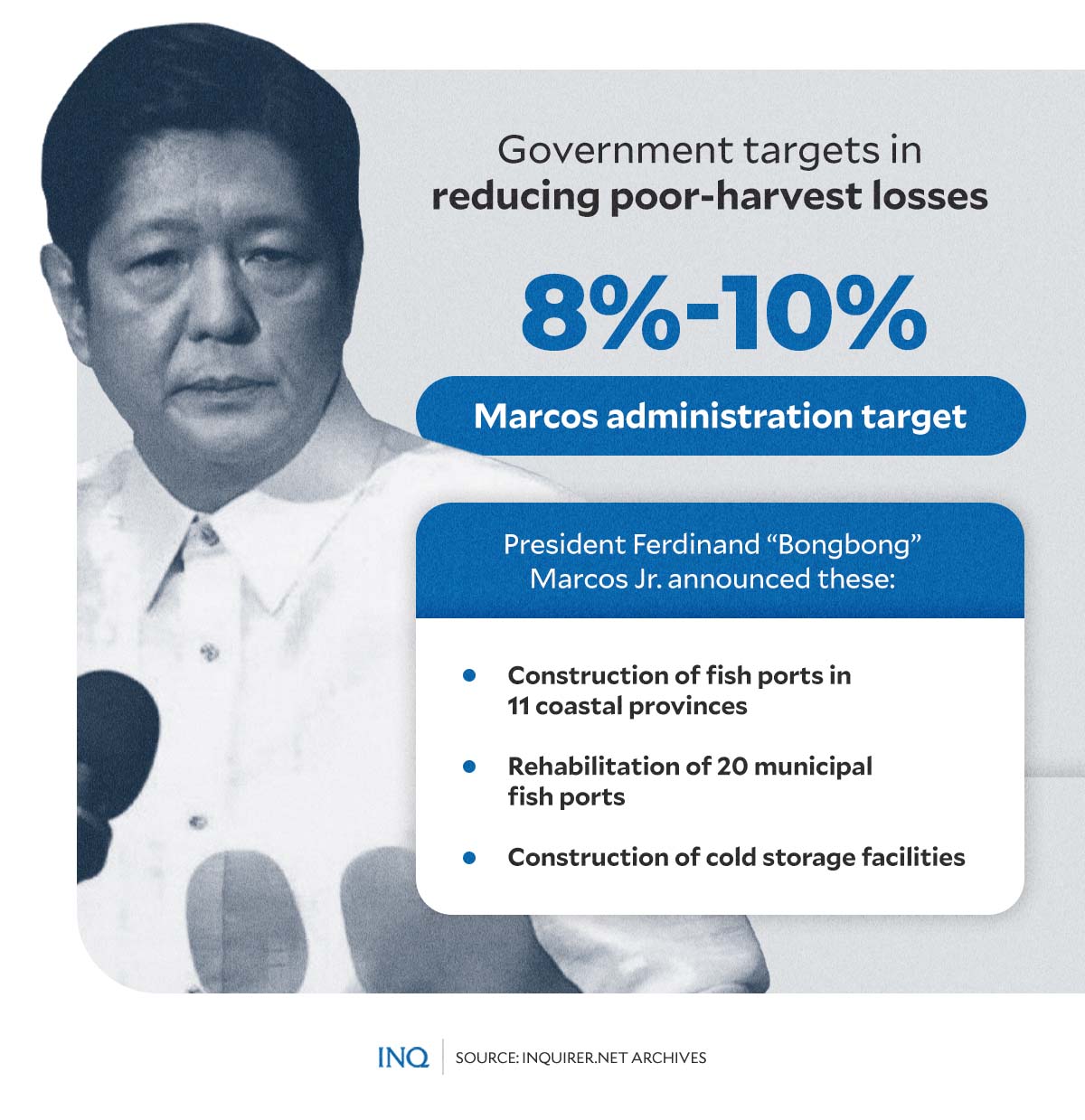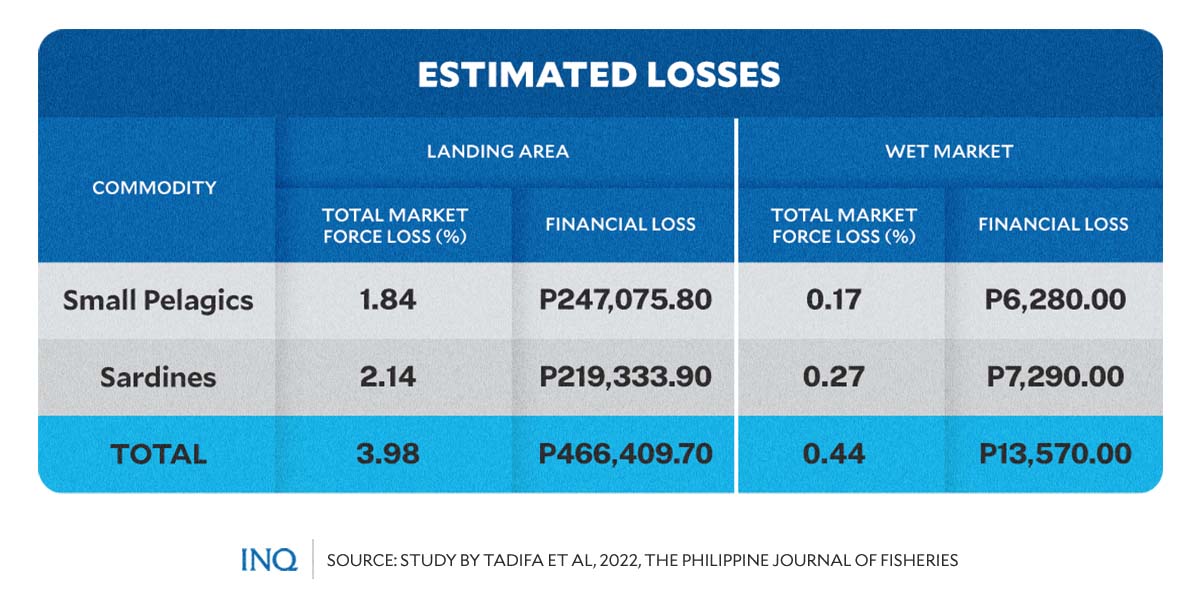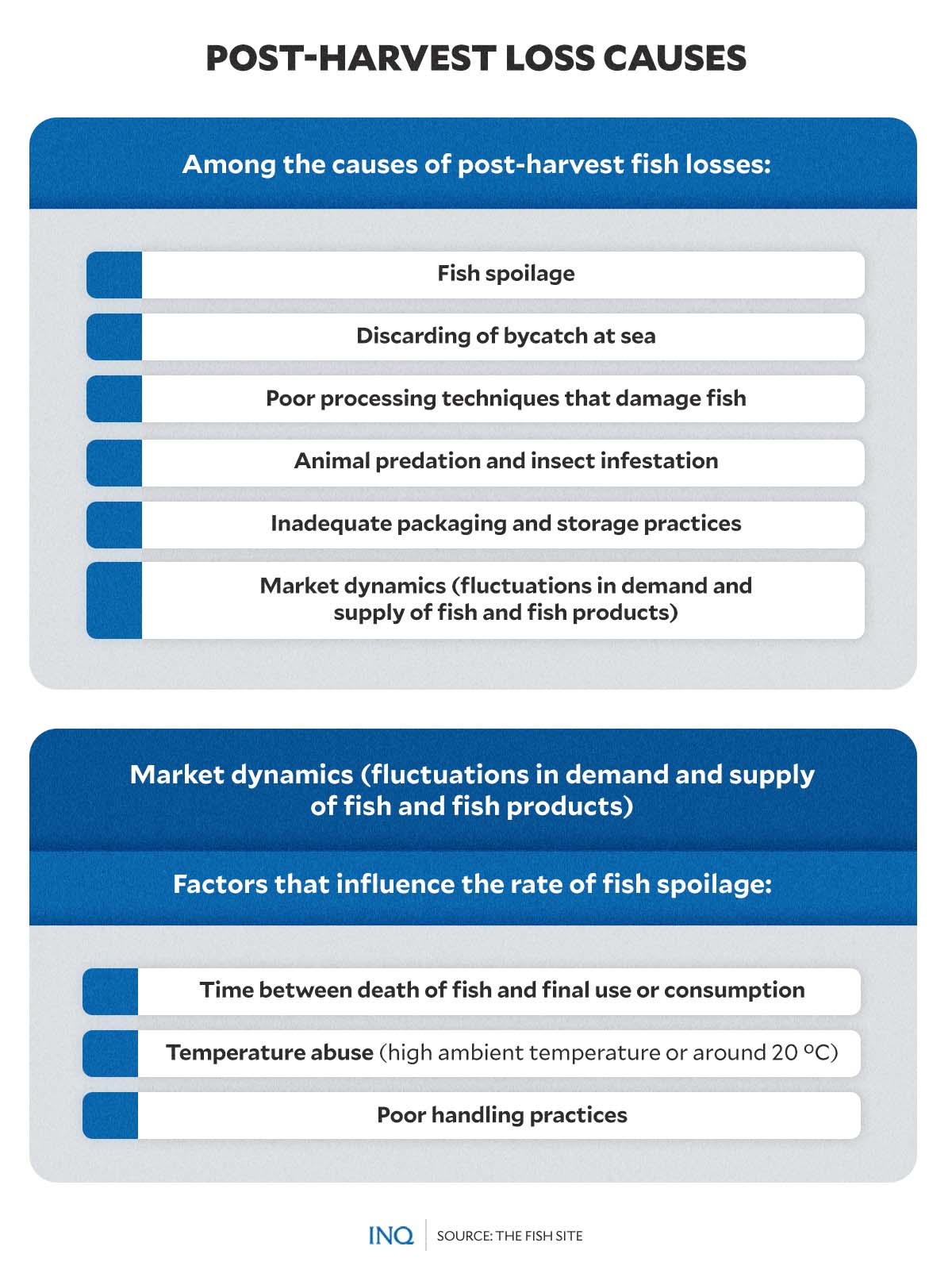PH post-harvest fish losses need more than band-aid solutions, gov’t told
MANILA, Philippines—While the government has recently initiated “good steps” in addressing the country’s post-harvest fish losses, a marine conservation group stressed that solving the problem would require more than band-aid solutions.
In a statement sent to the Office of the President and the Bureau of Fisheries and Aquatic Resources (BFAR), international advocacy organization Oceana lauded President Ferdinand “Bongbong” Marcos Jr.’s announcement to prioritize setting up fish ports and cold storage facilities.
To address the decline in production and post-harvest losses due to spoilage, Marcos, last March 14, gave a directive to build fish ports in 11 coastal provinces on top of those already being constructed at various ports in the cities of General Santos and Cagayan de Oro.
Aside from constructing additional fish ports—which the president expects to be operational by the end of this year—Marcos likewise ordered more cold storage facilities to be built to prevent fish spoilage and improve the country’s fish supply.
READ: Marcos orders setting up of cold storage facilities at fish ports
“This is welcome news for our artisanal or municipal fisherfolk, especially in coastal areas that could not scale up their post-harvest and cooperative opportunities due to the absence of facilities,” said Oceana.
Article continues after this advertisementAccording to the organization, the administration’s recent initiatives are aligned with the policy objectives that have been in place since the 1998 Fisheries Code.
Article continues after this advertisementCiting Section 2(e) of the Republic Act 8550, Oceana stressed that it is the State’s responsibility to “provide, first and foremost, to the municipal fisherfolk, any appropriate technology, research, financial, and marketing assistance support—including the construction of post-harvest facilities.”
However, despite the existing policy objective, Oceana said it hardly reflects the realities on the ground.
“[B]ecause of the lack of post-harvest services in their areas, artisanal fisherfolk have learned how to fend for themselves, such as women fisherfolk in Victoria in Northern Samar and Ragay in Camarines Sur by organizing themselves to reduce post-harvest losses.”
Post-harvest fish losses
Post-harvest fish loss refers to fish that are either discarded—too small or not valuable enough to land for sale—or sold at a relatively low price because of quality deterioration or due to market dynamics.
“This means that fish operators (fishers, processors, traders, and other stakeholders involved in fisheries) lose potential income. It also means that less fish is available to consumers, or consumers are supplied with low-quality fish and fish products,” a study published in the Fisheries and Aquatic Journal explained.
Various types of post-harvest fish losses include loss in nutritional value, physical loss, quality loss, economic loss, market force loss (caused by inadequacy between demand and supply leading to changes in the price of fish), losses due to traditional processing, losses during distribution and storage, and losses due to insect infestation.
Studies noted that among the causes of post-harvest fish losses include:
- fish spoilage;
- discarding of bycatch at sea;
- poor processing techniques that damage fish;
- animal predation and insect infestation;
- inadequate packaging and storage practices;
- market dynamics (fluctuations in demand and supply of fish and fish products).
PH’s post-harvest fish losses
Post-harvest fish losses occur in many fisheries across the globe, leading to worldwide losses estimated at 10 to 12 million tons per year.
In the Philippines, data from BFAR showed that the current fish spoilage ranges between 25 to 40 percent due to a lack of post-harvest equipment—including blast freezers, ice-making machines, and facilities such as cold storage warehouses and fish landing sites.
“This converts to major losses in income for the fisheries sector,” said Oceana.
Citing a study published in the Philippine Journal of Fisheries, Oceana said that around 20 to 40 percent of the total fish caught and farmed in the country is lost annually—with additional loss of quality and nutritional value.
These could be attributed to poor post-harvest practices, often associated with inadequate infrastructure for ice supply, safe handling, and cold storage and seafood transport.
The study found that the estimated total market force loss of small pelagics and sardines in the country reaches 3.98 percent in the landing area and 0.44 percent in the wet market. These losses amount to P466,000 and P14,000 worth of financial per case.
A good gov’t initiative, but…
While the government’s initiative was seen as a reasonable step in helping decrease post-harvest losses, Oceana stressed that addressing the problem would require more than band-aid solutions.
“[M]ore than the band-aid solutions that are provided in the government’s plans to address this recurring problem, we need to enable a better fisheries governance system that ensures inclusive, transparent, participatory, and accountable mechanisms are followed,” said the organization.
“Otherwise, we will end up with facilities that will be left un-used, under-utilized, improperly managed, and worse, become ‘white elephants’,” the organization added.
Marcos previously said that if the country could lower the catch’s spoilage to between 8 to 10 percent, the country would no longer depend on importing fish from other nations.
To achieve this goal, however, Oceana explained that the government “must first recognize the fact that solving this problem is not as simple as providing ice machines or freezers.”
“As long as municipal fish catches remain to be many units of small volumes, the reduction of spoilage will always be elusive,” Oceana said.
“Structural and/or organizational reforms of small fishers and fishing communities must be done in terms of landing their catches, making locally available seafood, and/or transporting them to urban centers within and outside of municipalities,” it added.
By doing so, fish prices in various markets would decrease. The group likewise suggested that the processing of fish and aquatic products must be based locally to retain more money in local economies and let these grow.
To repeat past mistakes and avoid wasting limited government resources on initiatives “that are doomed to fail in the guide of making [the country] look and sound good,” the government was also told to conduct a thorough assessment of its past programs on post-harvest activities—and apply lessons from those in designing, planning, and implementing new programs.
“An ecosystem-based approach to fisheries management is well-entrenched in our fisheries laws and regulations. This underpins the management of natural fishery management areas that are supported by research, technical services, and guidance by the State,” said Oceana.
“Simply put, we cannot manage our fisheries ecosystems without the requisite technical support and services from the national government. However, the downward trajectory of fish stocks is a symptom of the fact that we are not effectively managing our fisheries,” it added.
Addressing food security
Aside from the issue of post-harvest fish losses, the marine conservation group also highlighted the country’s food and nutritional security.
“Likewise, despite the availability of locally caught fish, food security and fish consumption is decreasing over time, particularly in low-income and rural households, because of the increasing price of food, a growing population, unsustainable development, and impacts from natural disasters (climate change), and lingering effects of the pandemic,” the group said.
“Hence, it strongly recommends to prioritize the sustainable management of our fisheries and the wellbeing of artisanal fisherfolks for food and nutritional security and livelihoods to reduce hunger and poverty incidence in the Philippines.”
Oceana also emphasized that municipal or artisanal fishers, who produce nutritious food, suffer from malnourishment and remain the poorest of the poor.
According to the latest data from the Philippine Statistics Authority (PSA), fisherfolk had the highest poverty incidence in 2021 at 30.6 percent. The significant increases in poverty incidence were also the highest among fisherfolk, with an increase of 4.4 percent.
READ: When those who feed the nation are the poorest: Farmers, fisherfolk in deepest poverty pit
“[L]et us take immediate steps towards a more responsive, sustainable, pro-people, and science-based management of our fisheries, alongside complementary measures, such as improving post-harvest activities,” said Oceana.




